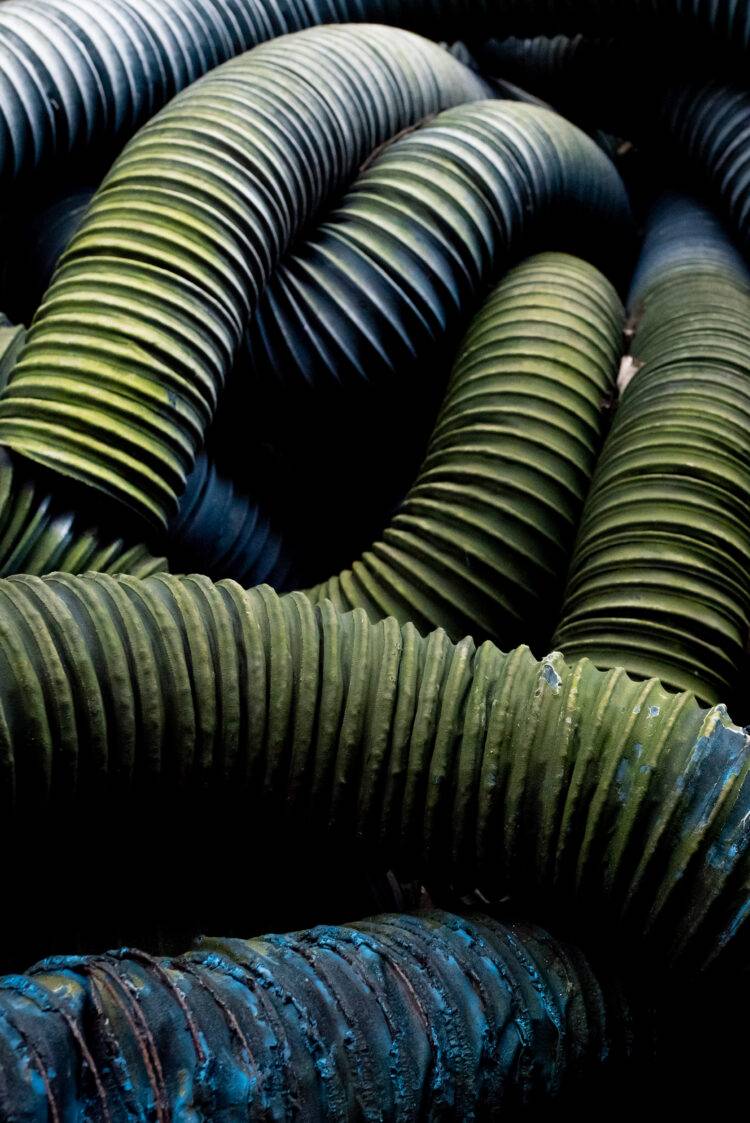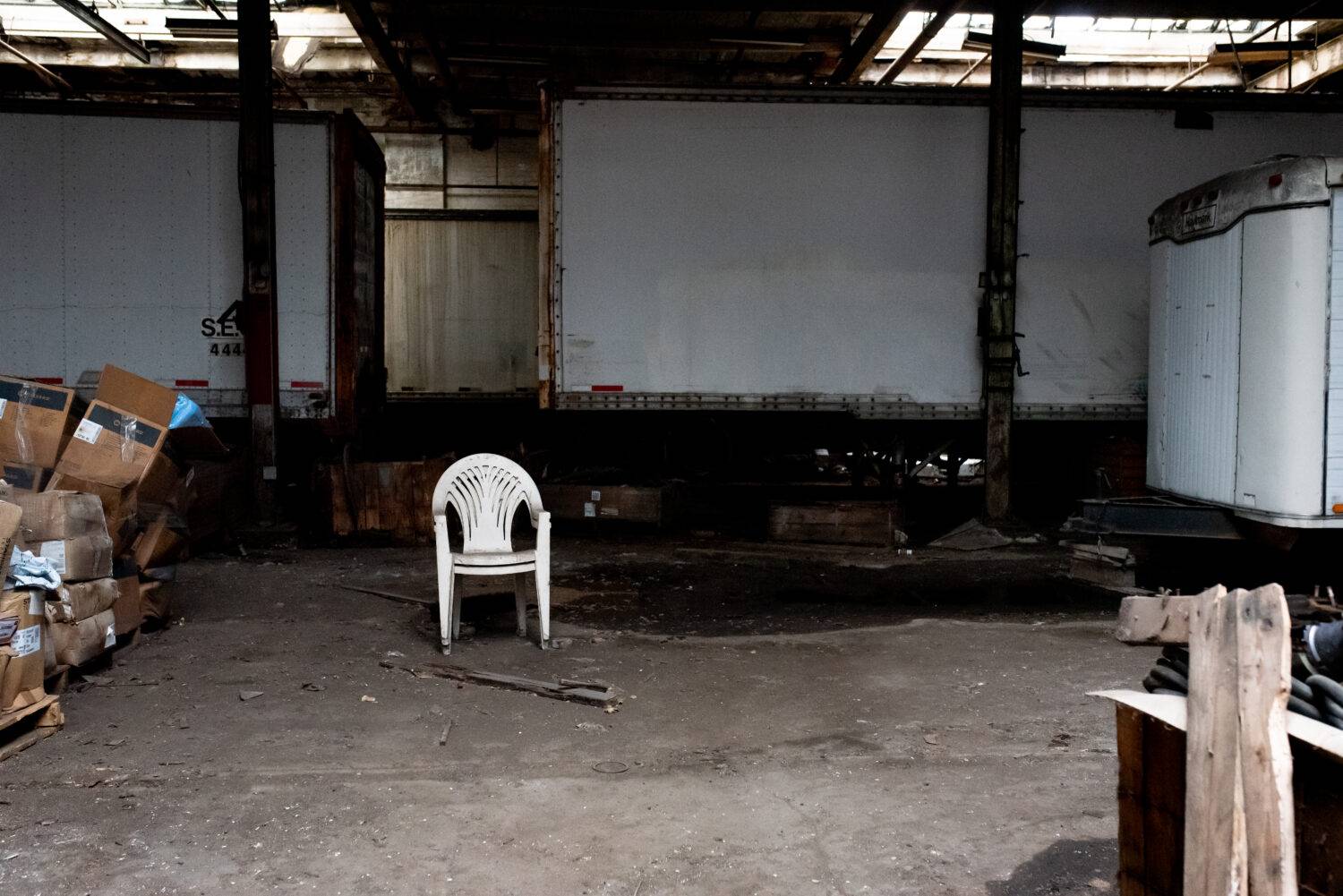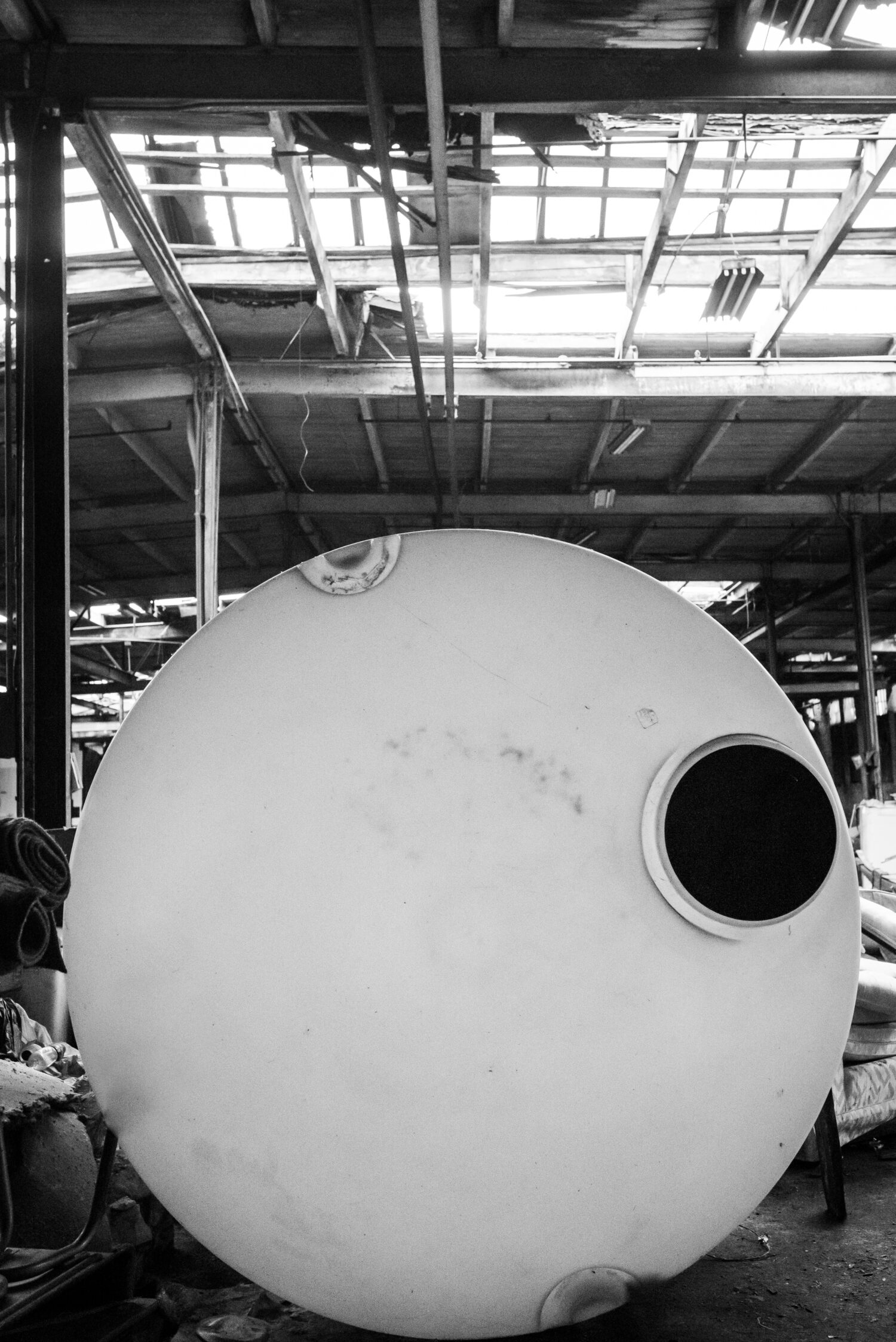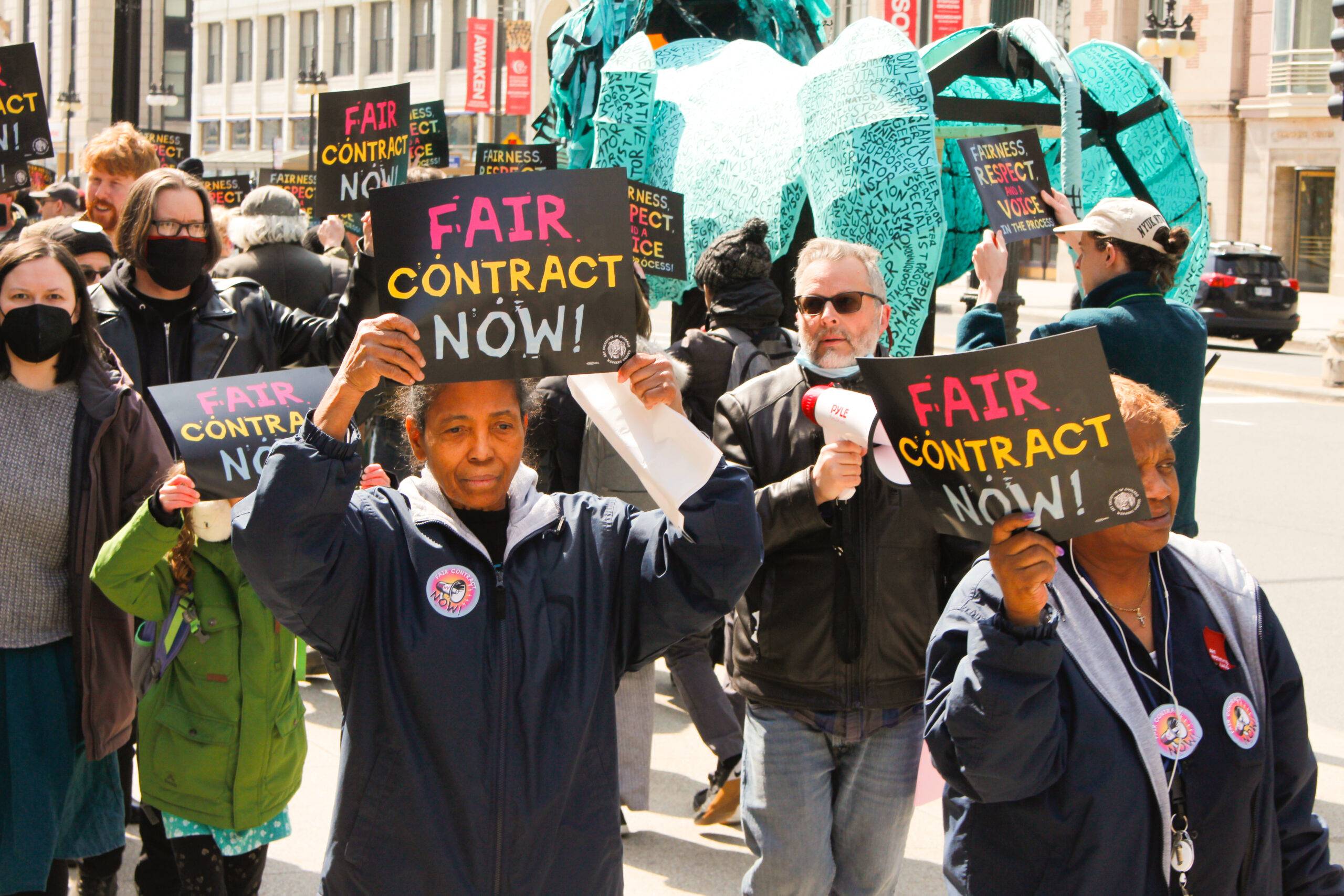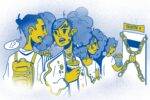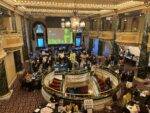
Ken Dunn explains how he’s able to keep his recycling trucks running by salvaging donated materials. These tubes will be used to repair the truck’s hydraulics. Photos by Lillian Heredia.
The fate of the discarded is the obsession of Ken Dunn, owner and operator of the Resource Center, a warehouse on Chicago’s South Side that is a labyrinth of semitrailers and towering pallets. Contained within are uncontested materials salvaged on the premise of discovering value in the rejects, the surplus, and the waste. Items from the Resource Center are present in works of many Chicago-based artists, including Dan Peterman and Theaster Gates, both of whom have purchased materials from the Resource Center (in case you ever wondered where Gates gets his firehoses).
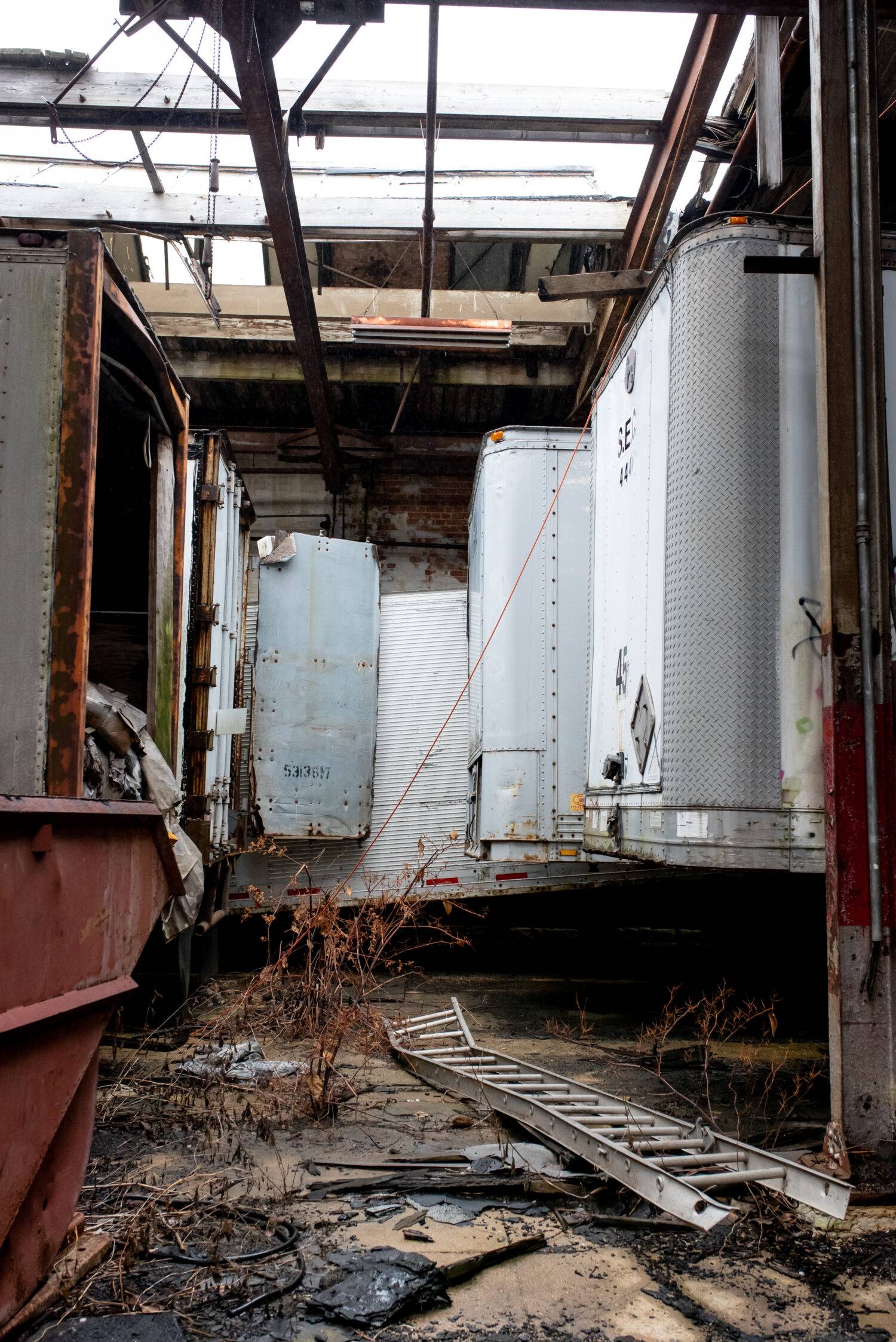
Semi-truck trailers densely packed together in the Resource Center. Some areas of the warehouse’s roof have caved in, encouraging plant life to grow among the stores of materials.
Dunn’s work emanates from what he describes as a formative experience with climate collapse during his childhood. When he was 3 years old, Dunn’s family purchased land in Kansas in a part of the plains where the once-fertile soil had turned to sand as a result of short-sighted farming practices, which ultimately led to the Dust Bowl disaster of the 1930s. A grassroots campaign to reintroduce organic matter back into the soil was an ongoing struggle, and given the enduring legacy of the Great Depression, required extreme resourcefulness and ingenuity. Dunn described this process as “trash farming.” Farmers basically scavenged anything organic and tilled it into the topsoil.
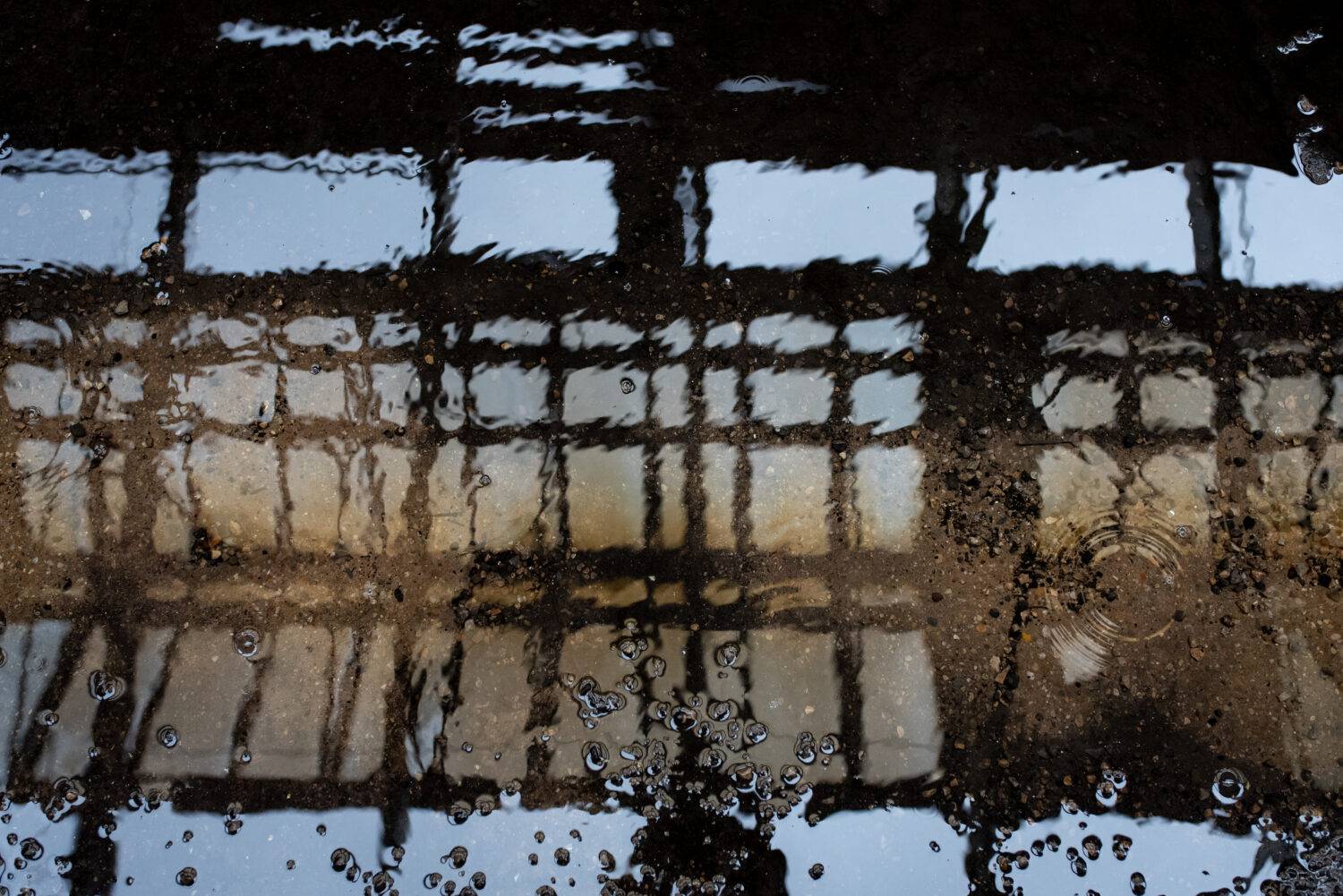
Many portions of the Resource Center’s roof have caved in, leaving the interior exposed to the outside weather conditions. On a rainy day, deep puddles form on the floor.
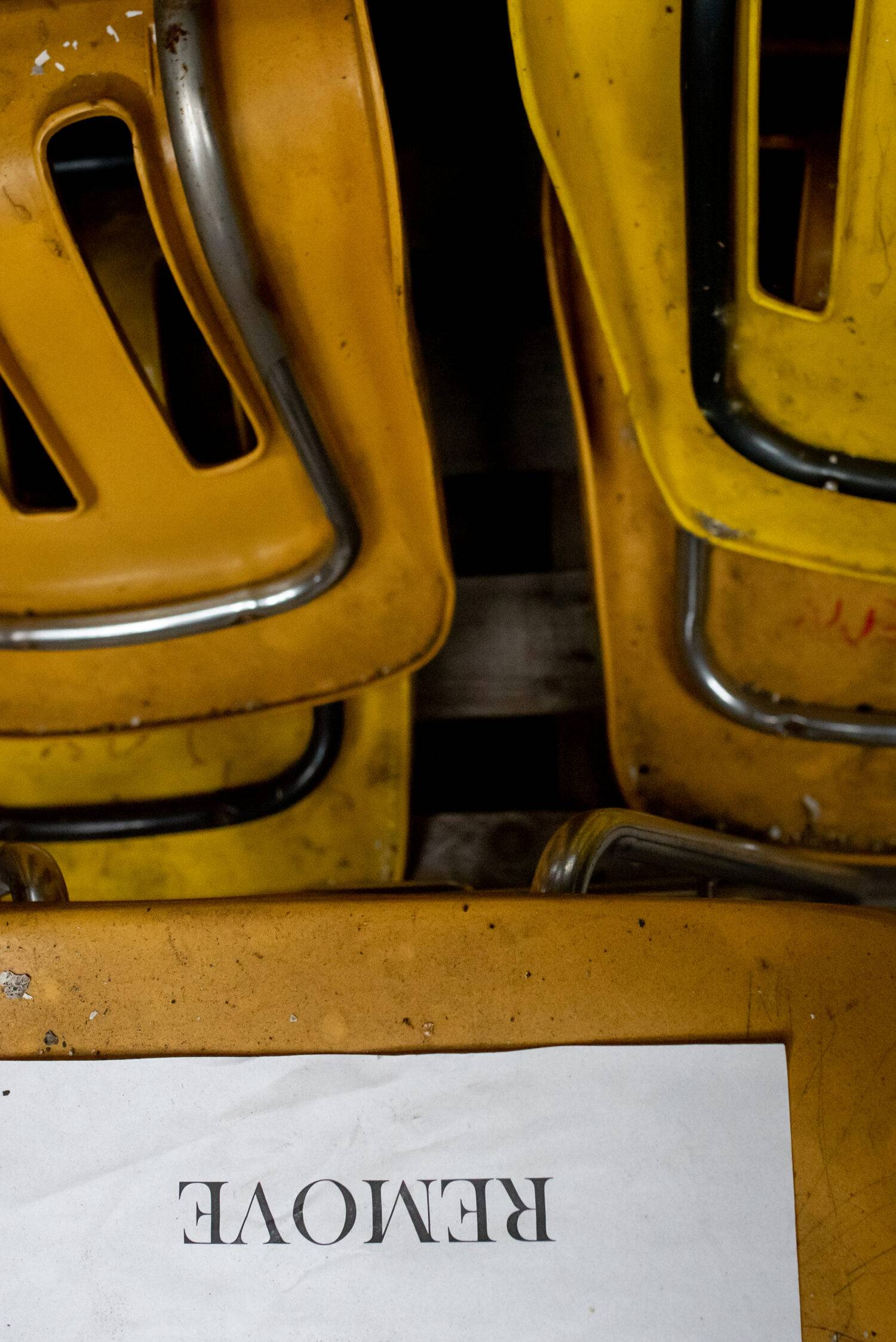
Chairs that were once used in a school are arranged on a pallet. A sign signaling their removal is still attached.
Dunn has since devoted his life to understanding and cultivating sustainable societies, a practice that initially took shape at the University of Chicago. Upon completion of a graduate degree from the Ideas and Methods Department, Dunn began teaching within the university’s Human Being and Citizen Program. Though Dunn believed in the essence of the department, he lamented the university’s tendency toward isolationism, especially with regard to its neighbors to the south. He has refocused his energies within BIPOC disadvantaged communities, accumulating and redistributing what he calls “unchallenged resources” as a strategy for social progress.
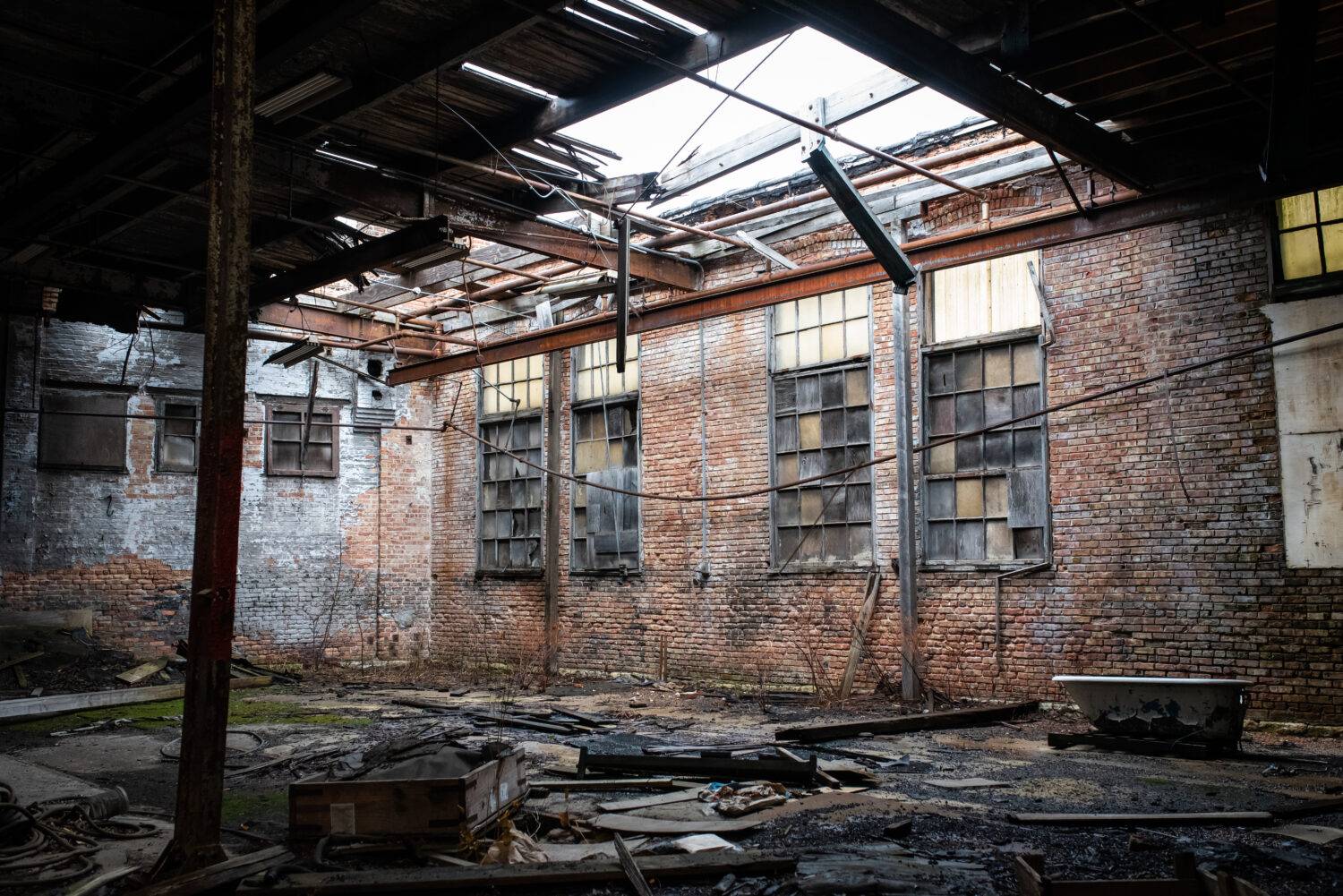
One corner of the Resource Center where the roof is completely gone. Grass and trees have begun to grow up around the debris that litters the floor.
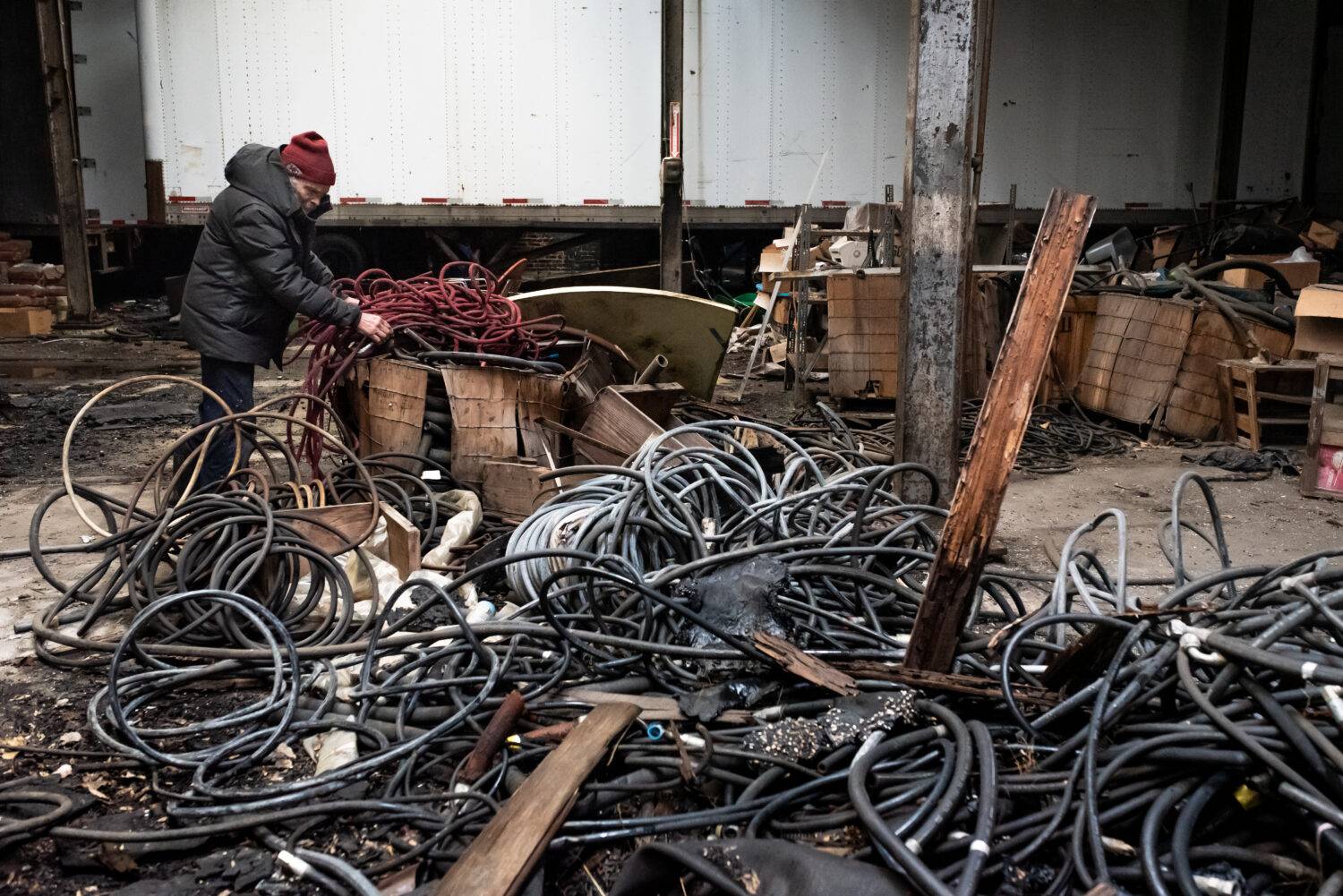
Ken Dunn, owner and operator of the Resource Center sifts through a pile searching for the hydraulic parts to repair one of the many recycling trucks his program runs.
Dunn’s activism, though focused, spills over into many arenas. He’s currently developing a program called the Sustainable Nutrition Institute, which strives to intercept and redistribute the 600 tons of food items arriving daily in Chicago that do not meet industry freshness standards, yet are still consumable. Dunn believes nutrition and community are intimately intertwined and represent the key to a sustainable future. “Let’s not all just sit back and wait for the politicians and industries to start it, because they’ll mess it up,” Dunn told me. “Every student now should be preparing to avert this crisis. Every discipline is needed.” We can only assume artists are included.
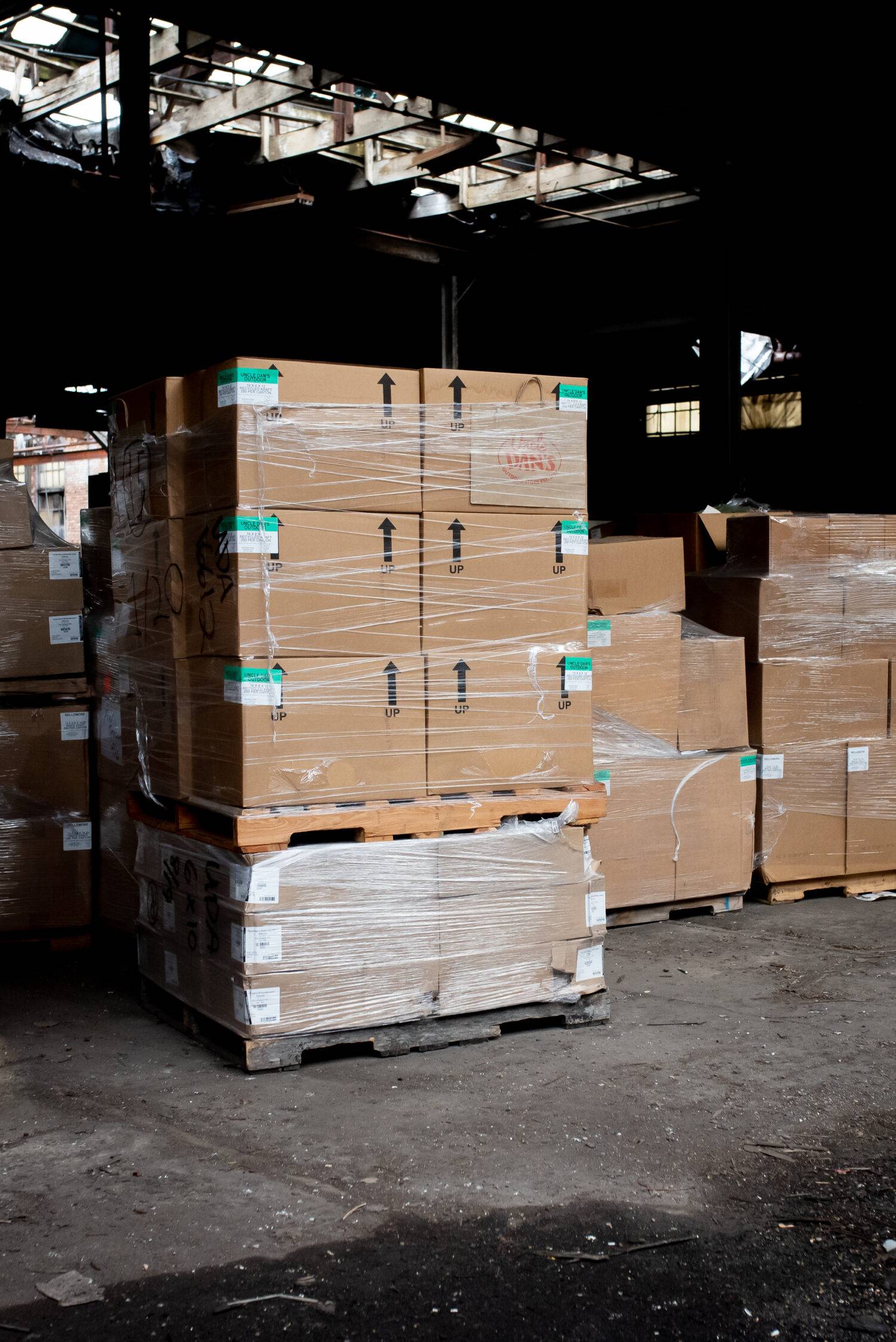
One of many pallets of boxes containing takeout bags from a restaurant that closed down during the pandemic. The Resource Center has absorbed a range of materials from the dining industry that was hit hard by the pandemic.
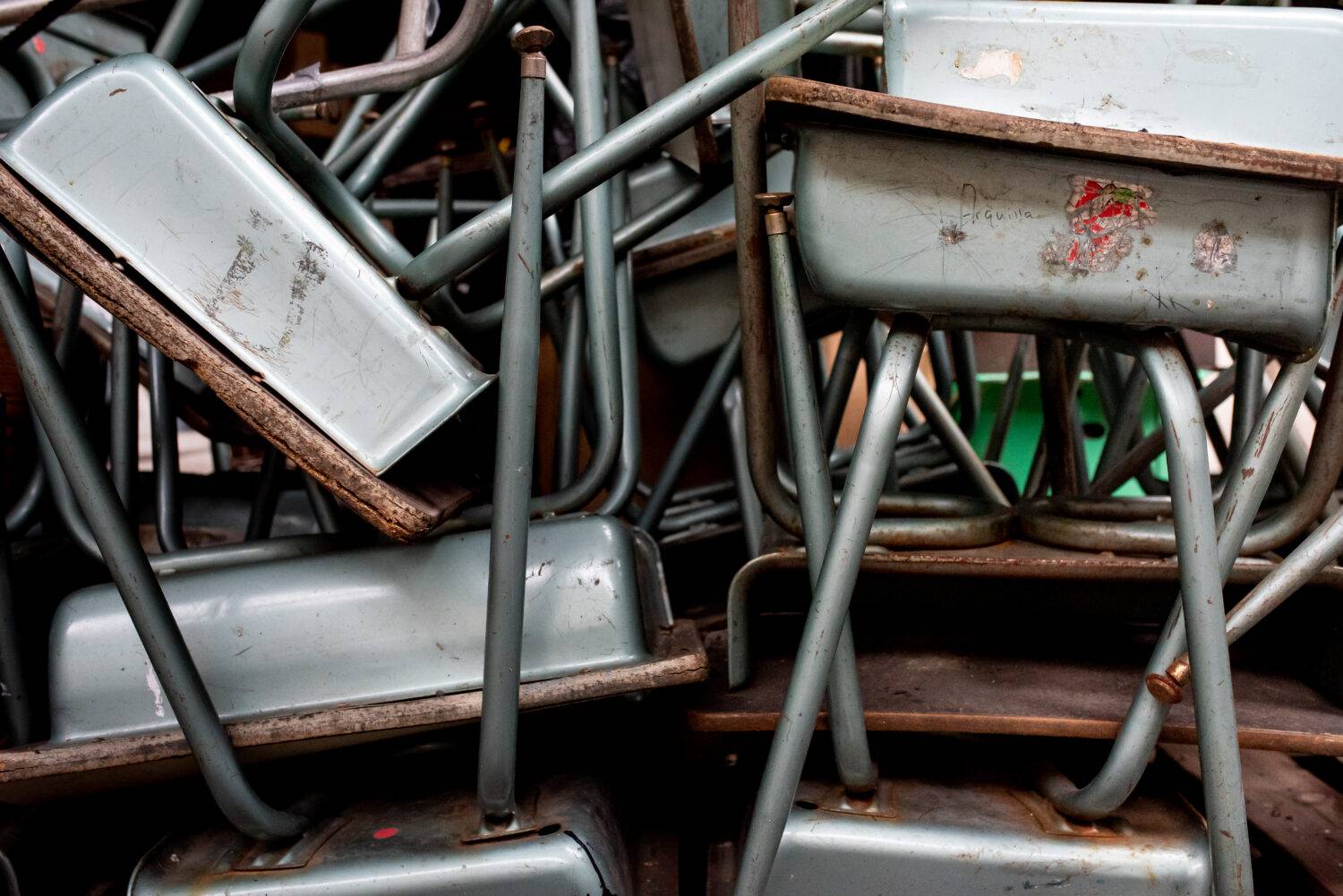
A stack of old school desks sits atop a pallet in the Resource Center. There is evidence of prolonged use including scribbled names and peeling stickers.

A single white sheets drapes over the various contents of a pallet in the Resource Center’s warehouse.
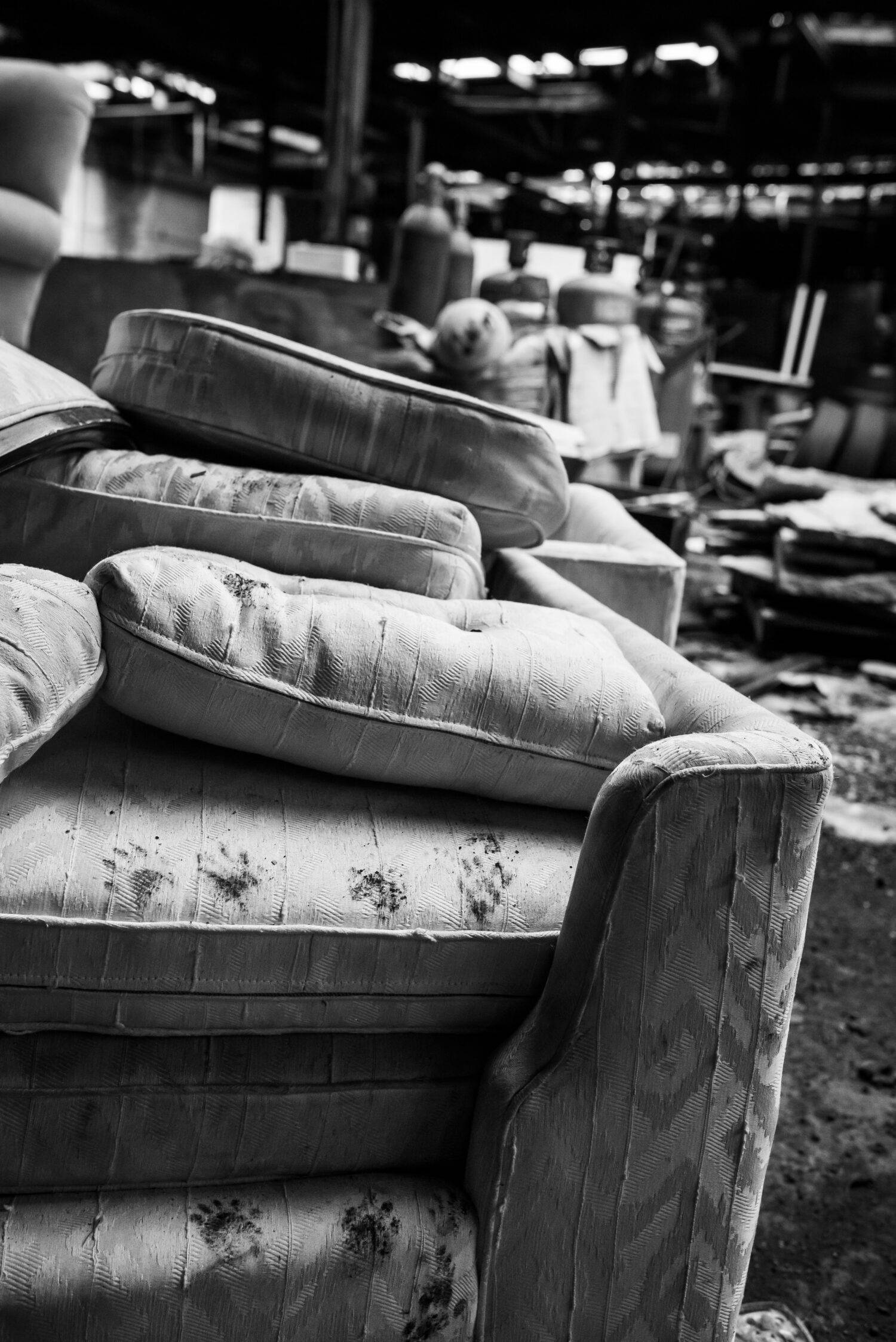
Dirty paw prints climb the side of an old sofa. Raccoon tracks are a common sight in the Resource Center.
Lillian Heredia (BFA 2024) is only sure about being unsure.

